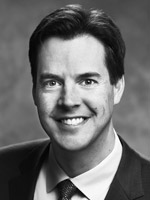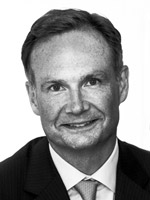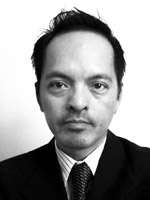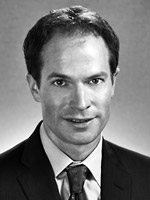Risky Business
Actuaries from Canada and the United States discuss their roles in the banking industry
April/May 2017Expanding opportunities for actuaries is a key priority for the Society of Actuaries (SOA). One potentially promising area of expanded practice is in banking and credit risk. This article explores the experiences and perspectives of several actuaries with significant experience in banking and credit risk in Canada and the United States.
- Mark Austin, FCIA, FSA, spent 18 years with the Royal Bank of Canada and is now CRO with Brookfield Annuity.
- June Meimban, FRM, ASA, MAAA, has worked for PNC Bank and now Citizens Bank, where he is currently vice president of strategy and analytics.
- Mike Schmitz, FCAS, MAAA, is with Milliman and consults with banks, mortgage companies, monoline mortgage insurers, financial guaranty insurers, insurers on credit related asset risk, government insurers (including the Federal Housing Administration) and others.
- Erik von Schilling, FCIA, FSA, has worked for Toronto-Dominion Bank in Toronto and is now with the Canadian Imperial Bank of Commerce.
This is what I discovered in my interviews with these individuals.
Q: How did your work background prepare you for where you are today?

Erik von Schilling
FCIA, FSA
von Schilling
I’ve had two major phases in my career. The first part covered 10 years with Mercer Consulting in Toronto with its Risk, Finance and Insurance practice. I had the opportunity to work with a number of industry-leading actuaries in a flat and dynamic environment that covered a very broad section of traditional and emerging actuarial practice areas. This experience developed my skill sets around understanding cash flows, valuation, assumptions, scenario testing and loss distributions, as well as managing projects and effective communication of complex topics.
The second phase of my career (the past 13 years) has been working in the treasury and risk areas within the banking industry. I was introduced to the Toronto- Dominion (TD) Treasury during one of my Mercer assignments and leveraged this relationship later to join TD Bank in a retail credit risk and economic capital management role. Retail credit has characteristics analogous to insurance, where pooling concepts over large numbers of individuals can be used to estimate credit losses. Key to my successful transition was understanding the unique differences in industry practice and the nature of the risk and accounting, which creates a different environment and a different solution than some of the insurance-based actuarial techniques. I didn’t try to fit retail credit into a traditional insurance framework, but rather I effectively applied many actuarial principles in a more generalized sense to this different application.

Mark Austin
FCIA, FSA
Austin
After a few years of traditional pension work, I sought out nontraditional assignments to supplement my regular pension consulting. I eventually took a keen interest in asset-liability management (ALM) modeling for pension plans to better understand the asset side of the balance sheet. This, in turn, led me to apply for a position at RBC in its risk management function in 1998. There, my mandate was to evaluate and calibrate third-party credit risk capital models that the bank intended to use in qualifying for Basel II regulatory capital reform.

June Meimban
FRM, ASA, MAAA
Meimban
I started my career as an actuarial student at a life insurance company. Later, there was a push for cash-flow testing. I had the opportunity to help model various assets and liabilities and test the company’s performance under various economic scenarios. This allowed me to have a firsthand experience in modeling various financial instruments.
From there, I moved to Merrill Lynch to work on mortgage securitization. That job allowed me to set foot outside of insurance and into the broader financial services industry.
I later moved on to working in analytics and building prepayment and default models, price optimization models, marketing models and scorecards. One of the firms for which I worked was a startup that collected mortgage data and built prepayment and default models. I even worked as an independent consultant and built a loan-level risk projection system for Toyota Financial, one of the largest auto-finance companies in the world. I also had a job at a boutique consulting firm specializing in modeling complex derivatives, catering to banks, hedge funds and investment firms. Finally, I worked for a consulting firm that developed price optimization systems for banks, insurers and lenders.

Mike Schmitz
FCAS, MAAA
Schmitz
I began consulting on credit risk by doing assignments for monoline mortgage guaranty insurers. These companies take residential mortgage credit risk through an insurance contract. Working for these companies gave me a deep appreciation for the tail risk associated with credit risk generally and mortgage credit risk in particular. The original industry completely folded during the Great Depression, and the modern industry lost several companies following the South Central Oil crisis of the 1980s. That instilled in me an appreciation for the tail risk that mortgage credit has. As we headed into the recent global financial crisis, I had already been consulting companies about the unsustainable bubble that we were experiencing and had authored a public article on it in 2006 before the bubble burst.
Q: What is the nature of your work and where do your actuarial skills fit into this work?
von Schilling
I have worked in the bank treasury space for the past 10 years and have held roles in capital management and planning, asset-liability management strategy and execution, as well as being involved with liquidity and funding management for the bank. The recent Basel developments for both capital and liquidity have had a profound impact around managing the bank’s balance sheet, and the treasury function plays a central role in not only measuring and managing these risks, but in setting the internal pricing and allocation of these costs through a central capital allocation and funds transfer price system. My actuarial background has been an asset for understanding the complex multidimensional constraints and risk drivers affecting the balance sheet economics and establishing disciplined frameworks and management processes to optimize and drive value creation.
Austin
In my role as an actuary in banking, I reconciled actuarial and capital market views on risk-taking, highlighting the opportunity cost of renewing mispriced bank lines to corporate clients; established early-warning signals for credit deterioration; and led the deployment of a proprietary loan mark-to-market model. In a subsequent role, I managed a team of 20 employees responsible for Basel-compliant credit risk parameter estimation and stress-testing for the wholesale portfolio; implementation of best-practice economic capital methodologies for credit, operational and business risks across the enterprise; and the development of policy credit limits that aligned with the organization’s risk appetite. Overseeing the bank’s inaugural enterprisewide stress testing exercise in 2007 and adapting this program in response to the global financial crisis that followed was an unforgettable experience. Throughout my career at the bank, I certainly drew upon and was grateful for my actuarial skill set, but this was never a prerequisite for the roles I had.
Meimban
I am responsible for identifying and evaluating opportunities to improve pre- and post-default performance on several consumer portfolios and deposit products, including mortgages, home equity lines of credit (HELOCs), auto loans, student loans, credit cards and checking accounts. I analyze historical data and apply integrative and critical thinking to identify trends and make business recommendations. I build predictive models to optimize our collection activities to mitigate risks that arise from loan defaults and overdrawn accounts. Credit and operational risks are my primary concerns. Transition models are used extensively in banking to project a loan’s migration from one status (current, 30 days past due, etc.) to another (current, delinquent, prepaid or default). Building such models utilizes logistic regression, which is based in probability theory.
Schmitz
We consult to banks, mortgage companies, monoline mortgage insurers, financial guaranty insurers (bond insurers), insurers (both life and property and casualty [P&C]), government insurers (including the FHA) and other financial institutions on credit-related asset risk. I also was hired by one of the rating agencies to build a stochastic economic capital model for financial guaranty risks. The actuarial roots are a clear foundation in this work; the diligence, healthy skepticism, ingenuity and standards of practice are integral. It’s truly a multidisciplinary team effort involving actuaries, economists, data scientists and programmers.
Q: Was being an actuary a definite help?
von Schilling
Yes. There are not many actuaries working in banks, so describing myself as an actuary is a differentiator and usually commands a base amount of respect that I must be smart. That’s at least a good start! I often describe myself as having a foot in two worlds. I am not a Ph.D. quant or “rocket scientist”; however, I understand models and assumptions enough that I can communicate, challenge and understand effectively how to use the models.
Austin
Yes. I was fortunate to work with a large number of colleagues who had varied educational backgrounds and experiences. Many had graduate degrees—master’s or Ph.D.s in the natural sciences or financial engineering—and were very adept in a broad range of numerical methods and estimation techniques that could be applied to building closed and open-form solutions for the capital requirements of a bank portfolio, or modeling operational loss distributions by fitting frequency and severity distributions to loss event data. More than anything, I think I benefited from being a “lone actuary” immersed in this rich, intellectual environment in which the contributions of the whole were so much more than the sum of individuals. It was helpful in the initial years of my transition to banking to make the connection that default risk and mortality risk share a lot in how they can be modeled mathematically.
Meimban
Yes. Having worked previously as an actuary in insurance has exposed me to similar concepts and techniques that are portable to the banking industry. For example, loan default probabilities vary by characteristics, such as credit scores, loan-to-value ratios, loan age and so on. Probability models are built around these covariates. In actuarial science, there are survival models and hazard rates. Such models and concepts also are used in prepayment and default models in banking. Techniques and concepts are very similar.
Also, a lot of people in banking are aware of how difficult actuarial exams are, that our mathematical abilities are top-notch and that we are a bunch of very smart individuals.
Schmitz
Yes. I believe the key to our success is the actuarial foundation on which the practice is built, along with the multidisciplinary, collaborative teamwork.
Q: What does the future hold for actuaries in banking?
von Schilling
It definitely has the potential to be another important work sector for actuaries. The regulatory environment continues to evolve, introducing more competing and conflicting constraints around capital, liquidity and funding that need to be managed. All of that change will present a lot of opportunity for developing treasury balance sheet solutions.
Actuaries would need to think outside the box. The banking applications will not use all of the traditional actuarial techniques and “standards” found in insurance, pension and P&C business management. However, if one can generalize the skill sets a bit, there are plenty of potential applications, such as:
- Treasury ALM, capital and liquidity management
- Enterprisewide stress testing for risk and capital management
- Retail credit risk management—scoring models, lifetime profitability, provisioning, credit capital models
- Commercial and corporate credit risk management—ratings models, expected loss, portfolio credit management, credit capital management
- Enterprise risk management for banks
Austin
It can be an important area of practice for actuaries. Banks are typically large institutions with so much embedded complexity and sophistication in their operations. They play an important role in financing our economy and providing liquidity to the capital markets. Risk management and modeling, predictive analytics, customer segmentation, workforce analytics, product design and pricing are areas in which a qualified and engaged actuary could contribute and enjoy a fruitful career.
Meimban
I have no doubt that actuaries are qualified to do analytical work in banking. However, actuaries are not viewed as such. We are viewed as experts in insurance and pensions “only.” We all know that our skills are portable. But, unfortunately, outside of insurance and pension fields, our skills are underutilized.
One positive move is that the SOA is now including exams/courses covering predictive analytics. I think this is going in the right direction.
Being an actuary working in traditional jobs is somewhat “comfortable.” You have a secure job. Banking and investments, on the other hand, have more ups and downs. And, once an actuary gets out of insurance, he or she no longer enjoys that “reserved right” to do certain things. In banking, there is no such reserved right. Anybody can become a risk manager or risk analyst, although there is a growing trend now for certifications—such as FRM and CFA—being required or highly recommended for certain jobs in risk management and portfolio management.
Schmitz
I think that the Financial Accounting Standards Board’s (FASB’s) Current Expected Credit Loss (CECL) initiative and the tandem International Financial Reporting Standard 9 (IFRS 9) spell much greater demand for this work, and I think we are well placed to compete for that work with our strong analytics, multidisciplinary approach and the standards of practice.
Q: There’s currently no “gathering place” for actuaries in banking. How do you connect with your peers?
von Schilling
I recently joined the newly formed Banking Working Group of the International Actuarial Association (IAA). Developing communication and forums for actuaries who work in the banking field is one of the discussion items.
Austin
There are also a number of industry associations—such as the International Association of Credit Portfolio Managers (IACPM), Risk Management Association (RMA), Global Credit Data and Operational Riskdata eXchange Association (ORX)—that are well represented by banks and provide great opportunities for discussion, research and problem-solving across many topics.
Schmitz
I’ve tried to organize such a section within the Casualty Actuarial Society (CAS) called the Credit Risk Special Interest Section, but it’s not easy to get more than a handful of actuaries excited about this work. A joint group between the CAS and SOA would seem to make a lot of sense since some casualty actuaries are involved in the liability side of credit risk (mortgage insurers, surety, etc.) and some life actuaries are involved on the asset side. But how do we do it?
Conclusion
Once you have had the chance to read this entire issue of The Actuary, you will see that Canada and the United States are at about the same level of evolution with respect to actuaries in banking as South Africa and Australia were about a half dozen years ago. While this may seem to be bad news, the good news is that South Africa and Australia have taken huge steps forward and are now offering education materials to their students for a fellowship specialty that will provide them with a credential for working in banks on risk analysis that is truly “banking.” So, with those resources available to us, we can move ahead quickly and be caught up in a very short period of time.
Further, our friends in the United Kingdom have offered us another alternative. That is to find an independent credential that an actuarial candidate could attain that would then be added to his or her basic actuarial education and result in a fellowship designation (FSA) in banking.

